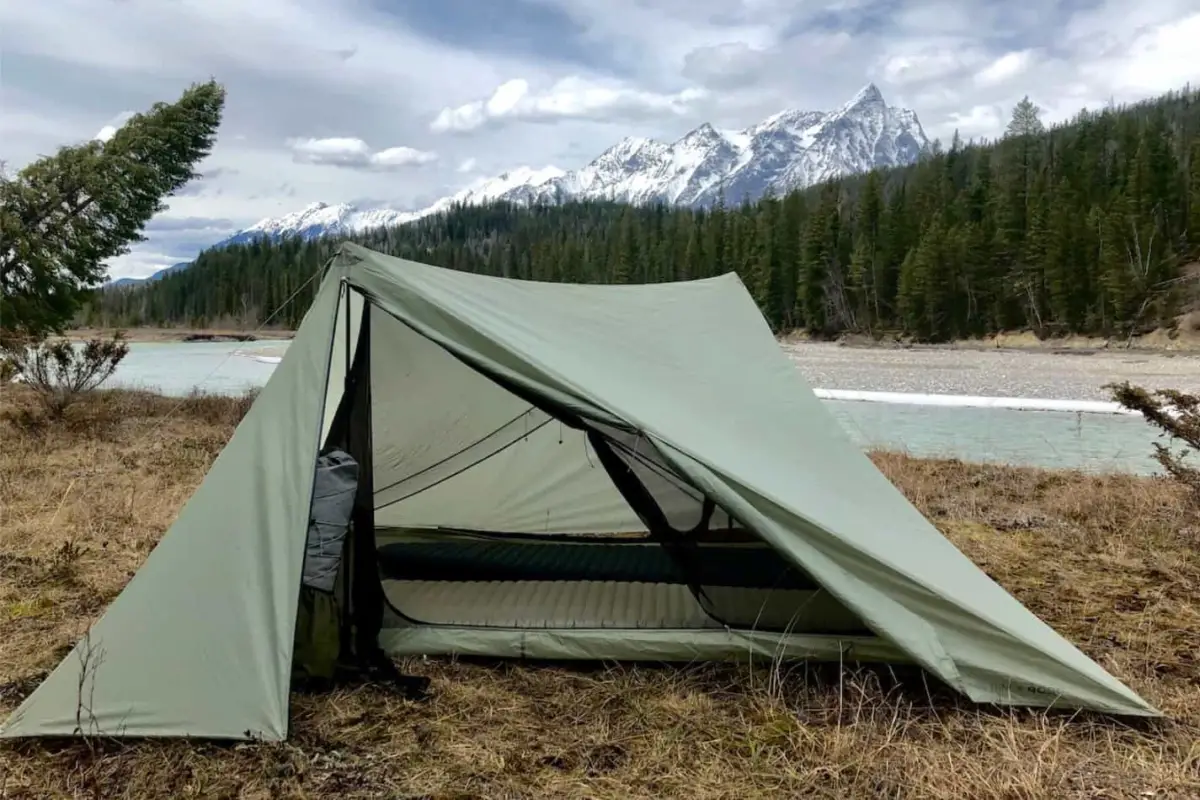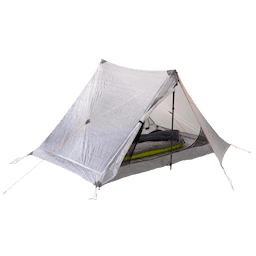For those trying to build their gear out with a more space-centric approach, getting gear that will work can be tricky, and much more painful to sort through the details to get the right gear.
I intend to showcase the best budget 2-person thru-hiking tents possible to help you make a wise choice and know that you get the perfect shelter for your thru-hiking trip.
When you choose to thru-hike there are many tents available to you that could work well, if you do not intend to spend loads of time in shelters like the AT provides then a 2 person tent is the perfect residence away from home.
As an Amazon Associate, I earn from qualifying purchases on our website. In addition, we include many other affiliates’ offers on the site.
Instantaneous Recommendations
Quick 2 Person Tent Comparison
| Gear Name | Materials | Weight | Vendor Link |
|---|---|---|---|
| Zpacks Duplex | DCF | 18.5 oz / 525 g | Check Price |
| Gossamer Gear “The Two” | SilNylon | 23.5 oz / 667 g | Check Price |
| NEMO Hornet Elite OSMO 2 | SilNylon | 28.6 oz / 812 g | Check Price |
| BigAgnes Copper Spur UL2 | SilNylon | 51 oz / 1445.8 g | Check Price |
| DurstonGear X-Mid 2P | SilPoly | 35.4 oz / 1005 g | Check Price |
| HMG Unbound | DCF | 24.0 oz / 680 g | Check Price |
| DurstonGear X-Mid Pro 2 | DCF | 18.2 oz / 515 g | Check Price |
| Six Moon Designs Lunar Duo | SilNylon | 57 oz | 1600 g | Check Price |
| TarpTent StratoSpire 2 | SilPoly | 43.8 oz / 1242 g | Check Price |
| 3F UL Lanshan 2P | SilNylon | 43 oz / 1220 g | Check Price |
My Choice for Best 2 Person Tents for Thru-Hiking
Now that you have seen my list of the top 10 thru-hiking tents let’s dig into each and explain why I chose to rate them there and why they may be a perfect match for you and your long-distance hike.
Zpacks Duplex
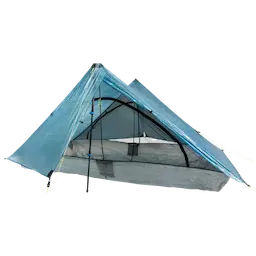
- Ultralight Design: The Zpacks Duplex is exceptionally lightweight, weighing just over one pound, making it a top choice for backpackers and thru-hikers who demand minimal weight.
- Spacious Two-Person Shelter: Despite its lightweight design, this tent provides ample room for two campers, with a generous floor space and headroom.
- Durable Materials: The tent is constructed with high-quality Dyneema fabric, known for its strength and durability, ensuring long-lasting performance on the trail.
The Duplex is a lightweight, high-strength, highly waterproof fabric that makes it ideal for making tents and shelters since it does not absorb water or stretch at night. The fabric is called Dyneema Composite Fabrics (DCF), a lightweight, high-strength, highly waterproof fabric that makes it perfect for this use.
While the Duplex is a two-person tent for thru-hikers on the trail this is a one-person with space to spread out on the trail. Having space to lay gear out and move around is highly valued when you are truly living on the trail, and just like a house, a little more space is never a bad thing.
This is a single-wall tent which does mean you will face condensation internally and possible water drips overnight if the ceiling shakes more move a lot; some people find this a big downside to a single-wall tent and a reason why they don’t purchase a DCF tent as this are very commonly single-wall constructs.
Gossamer Gear “The Two”
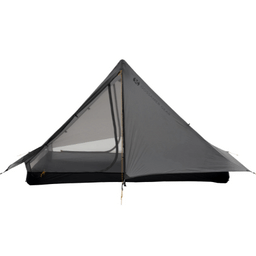
- The Two has the capacity to hold two people and is light enough for you to carry without weighing you down. The following are some of the features: pre-sewn seams, bright pull-outs, robust zippers, and fully rigged lines.
- The Two is also lightweight and simple to deploy, strong, roomy, and weighs less than 2 pounds. Both sides include doors for easy access and maximum ventilation.
The Two is lightweight, with full protection from rain and bugs, factory-taped seams and the main body and floor have 1800mm waterproof UTS coating.
It also features great headroom (and shoulder room) and is built to fit tall people while providing a big vestibule with great protection and easy side entry.
NEMO Hornet Elite OSMO 2
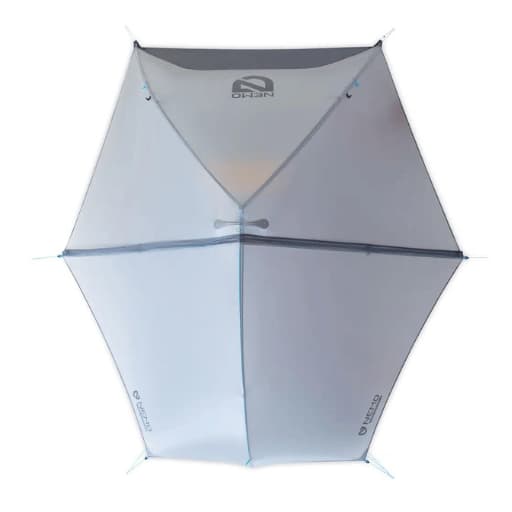
- Proprietary OSMO™ Fabric: The OSMO fabric offers exceptional water repellency, with 4x better performance and minimal stretching when wet. It’s also made from 100% recycled yarns, free from PFAS, and designed with reduced environmental impact in mind.
- Ultralight Design: Every component of the tent, from the DAC Featherlite® poles to the stitching and webbing, is optimized for weight savings without compromising strength.
- Flybar™ Volumizing Pole Clip: This patent-pending feature increases headroom within the tent, enhancing livability without adding unnecessary weight.
The Two is lightweight, with full protection from rain and bugs, factory-taped seams and the main body and floor have 1800mm waterproof UTS coating.
It also features great headroom (and shoulder room) and is built to fit tall people while providing a big vestibule with great protection and easy side entry.
BigAgnes Copper Spur UL2
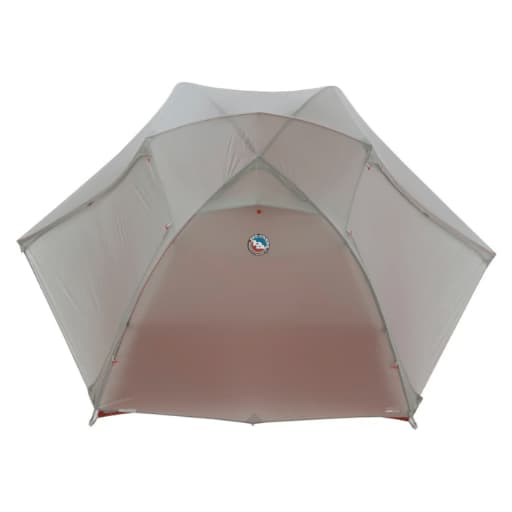
- Ultralight and Spacious: It strikes a balance between weight and livability, providing a roomy two-person shelter while remaining relatively lightweight for backpacking.
- Freestanding Design: This tent is freestanding, making setup a breeze. It can be pitched quickly and easily, even in locations with challenging terrain.
- Quality Materials: Big Agnes uses high-quality materials, including silicone-treated nylon fabric and aluminum DAC poles, ensuring durability and weather resistance.
- Dual Doors and Vestibules: The tent features dual doors and vestibules, providing convenient entry and exit.
The Big Agnes Copper Spur UL2 is the ultimate backpacker’s dream shelter. Imagine embarking on your next adventure with a tent that strikes a perfect balance between weight and spaciousness. Whether you’re a solo backpacker who wants extra room for gear or a duo seeking comfort without the burden of heavy gear, the Copper Spur UL2 delivers.
Its freestanding design means you can set up camp quickly, even in challenging terrains. With premium materials and robust construction, this tent is built to withstand the elements, ensuring you stay dry and comfortable. Dual doors and vestibules offer convenience and extra storage space.
When you choose the Copper Spur UL2, you’re opting for a reliable, lightweight, and versatile shelter that enhances your outdoor experience, making it an indispensable companion on your next adventure.
Dan Durston X-Mid 2P
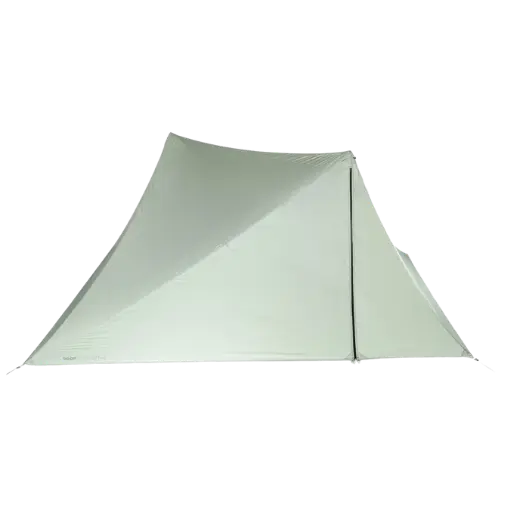
- The FASTEST tent to pitch on the market is my favorite tent for my outdoor trips!
- Incredibly spacious interior due to the unique outer and inner construction being a parallelogram instead of just squared off, allowing much taller people to fit!
The X-Mid 2P pitches with as little as two trekking poles and four stakes this makes it incredibly simple to pitch and get you ready to relax in comfort.
The X-Mid is a robust, roomy, and stormworthy boat, while anything lighter is smaller, less functional, and/or uses less durable materials.
The X-Mid 1 is roomy, simple to set up, and stormworthy for only 2.5 lbs (40oz / 1135 g). It performs well in the rain thanks to a fly-first pitch, full double-wall construction, no-sag poly fabric, large adjustable vents, factory seam taping, and a full-coverage fly.
Unlike most trekking pole tents, the X-Mid features a straightforward four stake pitch that doesn’t require any guylines, struts, or measuring pole heights. With huge doorways that aren’t obstructed by poles and simple one-handed zipper operation, the user-friendliness continues after setup.
TarpTent StratoSpire 2
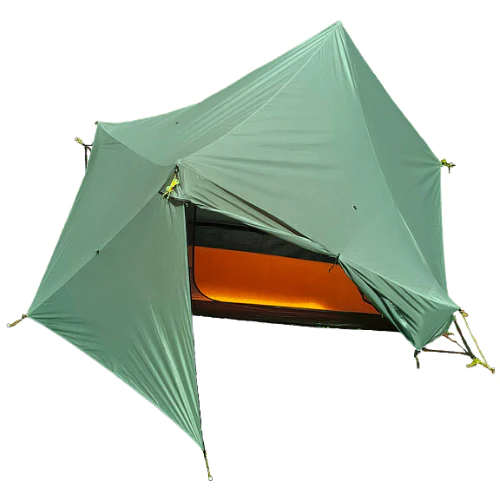
The Tarptent StratoSpire 2 is a two-person version of the StratoSpire 1 designed for single hikers to have more room.
- For trekking pole users, this shelter is a treasure: save weight and use your poles to establish a secure, wind and snow-resistant foundation.
- The StratoSpire’s unique, patent-pending design provides an enormous living and vestibule space perfect for the extensive gear a thru-hiker brings with them.
This tent is perfect for winter and summer conditions and has quickly become a favorite of the “fast & light” crowd.
The StratoSpire 2 comes with apex guylines preinstalled, which can be used to strengthen the ridgeline. It also includes fly-top pull-outs that may be guyed out in high winds and for snow loads. The tent has withstood severe thunderstorms and pouring rain without fail.
How to Choose a Tent for Your Thru-Hike
When you are deciding on what tent will work best for your thru-hike you have many things to consider before making your important purchase, each item can be a make or break for you and your enjoyment while out on the trail.
For some this is going to be based on how it can fit in a backpack, others will worry about the weight as the highest importance. Some will gravitate towards freestanding tents over trekking pole-style tents, others may care more about the space or materials.
This is all why you want to understand all the factors and which ones will be the most important to you and your choice. Let’s jump into each and give you some information on what they are and why they would matter.
Tent Setup
There are three main types of tents that someone will have, freestanding, semi-freestanding, and trekking pole tents. Each of these has some pros and cons them but people are typically more comfortable with one of the three.
Freestanding – These tents require no tent stakes with the tent body and the rainfly ending along the tent body or the tent poles, there are not many options available in this type for backpacking use. Can be adjusted easily as you can pick up and move the entire tent without removing tent stakes for optimum camp placing.
Semi-Freestanding – Very similar to the above tents but that you have tent stakes which are used to tighten up the rainfly and give full protection to the tent and vestibule area. This can be easier to move around the camp area for best placement unlike the next option below.
Trekking Pole – This tent uses your trekking poles to stand upright, it has no ability to remain upright without the framework the trekking poles provide. This also makes re-adjusting and moving the tent a full breakdown and re-setup as the entirety of the tent is staked out to maintain shape.
Seasonality
As to seasonality, this will depend on when your majority of trips occur, there are a few options which are three-season, three-plus season, and four-season. Choosing which will fit your needs and the weather you will expect will change the way it holds heat and breathes.
Three Season
This style of tent will often feature a rainfly made of solid material and an inner tent material which will be made from a no-see-um mesh, this allows you the most airflow possible which is very important when camping in warmer temperatures.
Three-Plus Season
Similar to the above tent but the walls will typically be a mix of solid material to block out some airflow but the rest are made from no-see-um mesh to allow some airflow to continue through.
Four Season
This tent style will have solid walls both inside and outside, this will block out nearly all breezes and will help conserve warmth non-stop in all weather. This can be critical in winter but also if you hike up high into mountains where severe cold is typical, not always just snow or inclement weather.
Livable AKA Internal Living Space and Capacity
While you live out on the trail you will want to have a space you can retreat to for some peace and quiet at times, for some people this space can be near cocoon-like and small and cramped, for others they need the biggest space they are willing to carry.
Key Specs To Think About:
- Floor Dimensions – The length and width measurements give a general indication of the floor surface size. Many tents do not have completely rectangular floors, so you may see measurements like 85″ x 51″ / 43″ (L x W head/foot). A tapered floor provides shoulder and arm room while also saving weight by having a smaller foot.
- Floor Area – This figure measures the total floor space in square feet. While this number is useful for comparing tents, it isn’t a reliable metric when measuring how well the area is utilized.
- Peak Height – When you sit up, no one wants to bang their head. However, peak height is measured at a single point, so don’t rely on this metric alone to assess overall clearance. Your personal test pitch and validation is a far superior method of determining overall space.
- Wall Angles and Shape – This is a far more significant aspect of tent livability than peak height. The higher the walls are, the more open the interior of the tent will feel. If you can’t go to a store to test pitch tents, look at the pitch of a tent’s walls in online photos.
Tent Weight
The weight of your tent is important as part of the big three it is one of your core areas to drop weight from your overall base weight. So you will want to look into the specific keys below as to tent specs that you should see how you align with and are willing to carry.
Understanding Tent Specs:
- Minimum trail weight – The total weight of the tent body, rainfly, and poles (the bare necessities). You will probably add more tent-related items like stakes, and a footprint, but this is the best spec level for an overall comparison.
- Packaged weight – This is the total weight of all the components included in a purchase: body, rainfly, poles, stakes, stuff sack pole sack, instructions, and other items. The combined weight you’ll carry on the trek will be between this and the minimum trail weight listed above.
- Packed size – The amount of room a tent takes up in your backpack also has to do with how easy it is to manage in a pack. For couples, you can look to decrease the amount of space needed by separating components and having your spouse take only the poles and rainfly, for example.
Materials
There are many materials used to make tents, some provide more water resistance, others provide better costs. Let’s take a few minutes and discuss the three most common materials used in making tents:
- Dyneema or DCF – First discvered on sailboats this fabric has amazing abilities like the ability to withstand water, incredibly lightweight, and pretty durable which makes it good for tents but it comes at a solid premium in the costs.
- Sil-Nylon – The most common fabric used for backpacking tents, solid and dependable, the only large downside is that it abosorbs water over time and due to this it can sag and need to be tightened up after initial setup.
- Sil-Poly – Very similar to Sil-Nylon above but doesn’t absorb water so once setup you won’t have to worry about sagging from water absorbtion, though from my understanding this fabric is a little more expensive it is near in-line with Sil-Nylon.
How the Tent Fits in Your Backpack
This may be fairly small to some but how you want to load your backpack is important and some tents can be very tall when in their sack. This can be an issue if you prefer to put your tent horizontally, as is my preference, as this allows for a simple stacking of gear.

